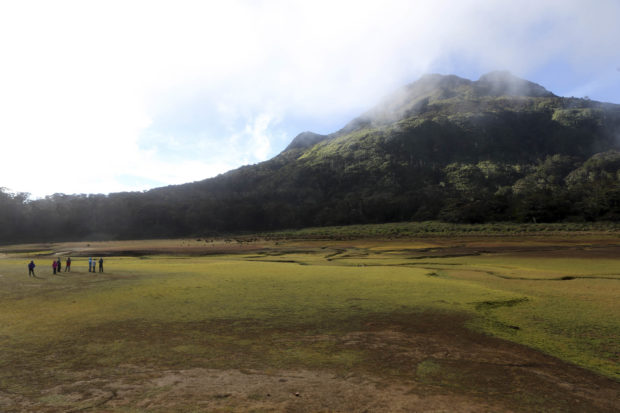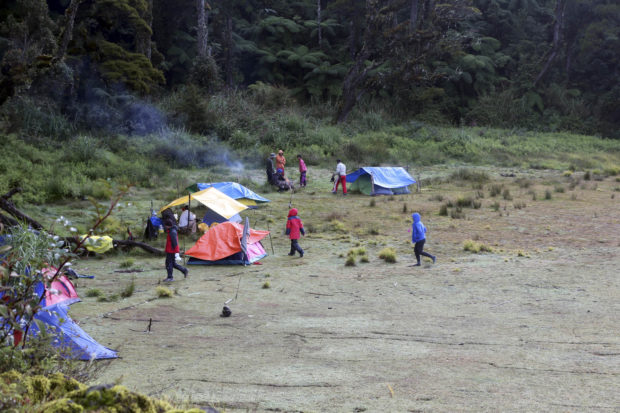Mt. Apo trails in Davao del Sur safe for climbers after quakes

CLIMBER’S GOAL The summit of Mt. Apo, the highest peak in the Philippines, is on top of every serious climber’s list of peaks to conquer. Mt. Apo can be reached through several trails in Davao del Sur and Cotabato provinces in Mindanao. —JEOFFREY MAITEM
DIGOS CITY—The series of earthquakes that rocked parts of Mindanao last year had not damaged trails in Davao del Sur province leading to Mt. Apo, the country’s highest peak. Local mountaineering groups said a recent assessment showed that the local trails were safe and open to climbers.
An environment official said that unlike the trails in the towns of Magpet, Makilala and Kidapawan City in Cotabato province which had been closed to trekkers, the Davao del Sur trails, such as those in Sta. Cruz and Bansalan towns and Digos City, remained open following the strong earthquakes in October and December.Mt. Apo, at 2,954 meters (9,692 feet) above sea level, offers panoramic views and adventures to climbers who flock there during the annual summer climb.
Assessment
Jayvee Agas, head of the regional public affairs office of the Department of Environment and Natural Resources (DENR), said the Cotabato trails had yet to be opened by local governments there due to the danger of landslides. Rye Glenn Trinidad, vice president of the Mindanao Mountaineering Federation Inc. in Davao del Sur, said his group and the Digos City Active Mountaineers conducted a trail assessment to prepare climbers for a tree planting activity on Mt. Apo from Jan. 30 to Feb. 2.
He said the groups were expecting to draw about 250 climbers to join the event, which was originally scheduled on Nov. 30 to Dec. 2 last year but was postponed following the earthquakes.
According to Trinidad, only 50 climbers a day will be allowed on Mt. Apo’s peak when this year’s climbing season begins on Feb. 3.
Article continues after this advertisementLimited accessClimbers are asked to stay on the summit only until 2 p.m. as the area will be off-limits at night, according to the guidelines issued by the Protected Area Management Board (PAMB). The DENR and PAMB have imposed window hours for climbers to prevent forest fires that had destroyed a large part of Mt. Apo’s forest in previous years.

CAMP SITE A group of climbers sets up camp near Lake Venado, below the summit of Mt. Apo. —JEOFFREY MAITEM
Agas also reminded climbers that swimming in Lake Venado was prohibited and they should bring their garbage when they return to their camps. All climbers, she added, must secure permits from the local government and undergo orientation before the climb. Over a thousand residents in four villages at the foot of Mt. Apo in Kidapawan took refuge in the city’s evacuation sites after the 6.6-magnitude quake on Oct. 29 left ground fissures near their houses, prompting the government to declare these areas as no-build zones. —ORLANDO DINOY INQ